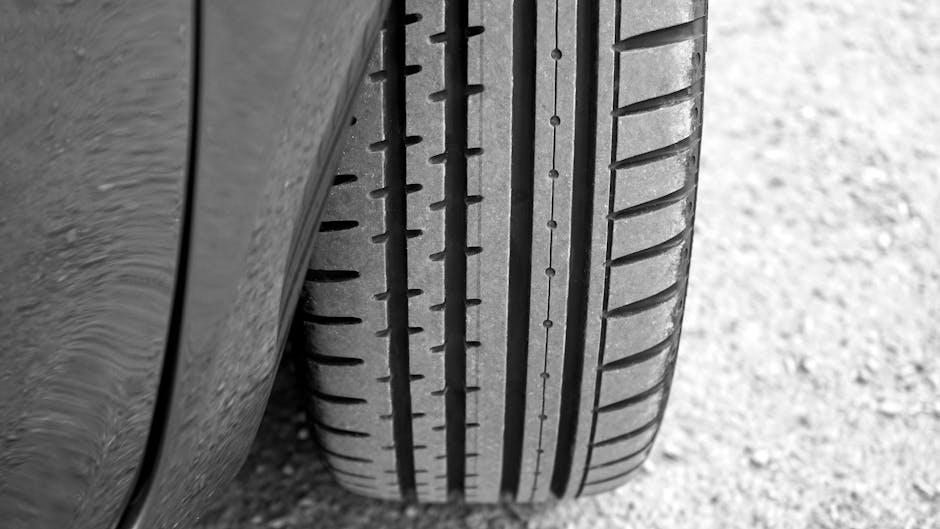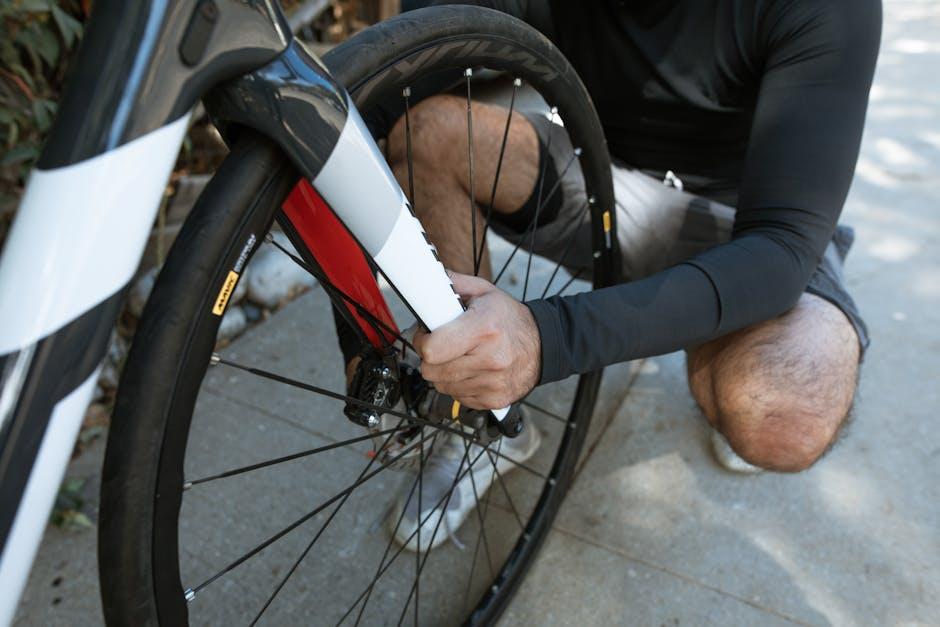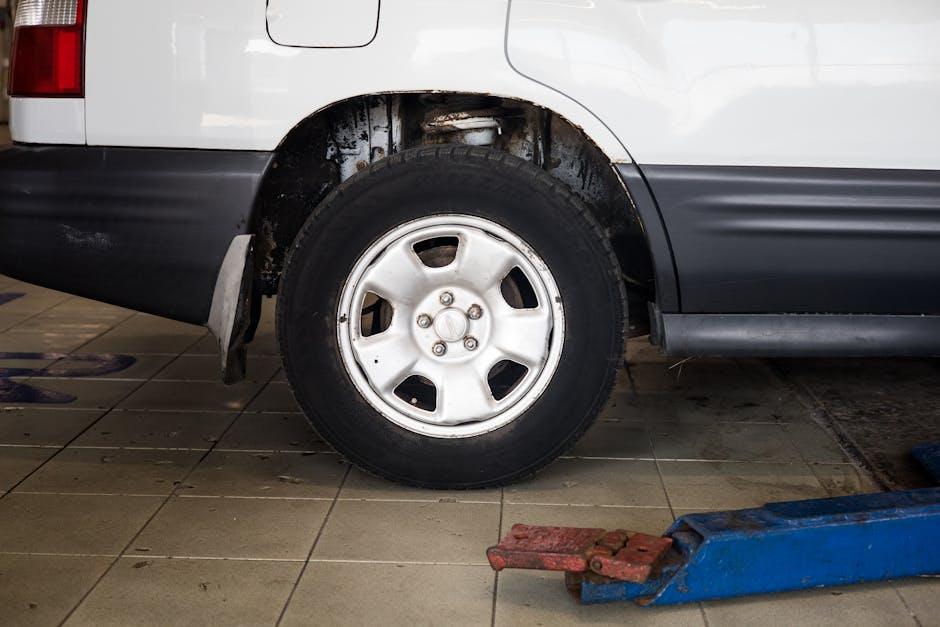In the intricate dance between your vehicle and the road, every component plays a vital role, but few are as crucial—and often overlooked—as wheel alignment. Proper wheel alignment is more than just a routine maintenance task; it’s the silent guardian of your car’s performance, safety, and longevity. As tires meet pavement at precise angles, they not only ensure a smoother ride but also extend the life of your tires, enhance fuel efficiency, and provide better handling. This article delves into the multifaceted benefits of maintaining correct wheel alignment, revealing how a subtle adjustment can steer you toward a safer and more economical driving experience.
Table of Contents
- Understanding the Impact of Wheel Alignment on Tire Longevity
- Enhancing Vehicle Safety Through Precise Alignment Techniques
- How Proper Alignment Improves Fuel Efficiency on Every Drive
- The Role of Wheel Alignment in Preventing Suspension Wear
- Expert Tips for Maintaining Optimal Alignment Between Services
- Signs Your Vehicle Needs Immediate Wheel Alignment Adjustment
- Q&A
- To Wrap It Up

Understanding the Impact of Wheel Alignment on Tire Longevity
Proper wheel alignment plays a crucial role in maximizing the lifespan of your tires by ensuring that they wear evenly. When wheels are misaligned, tires may experience uneven pressure distribution, which leads to premature tread wear on one side. This not only shortens the tire’s usable life but can also cause vibrations and reduce fuel efficiency. By maintaining correct alignment, you enhance tire performance, optimize handling, and avoid the costly cycle of frequent tire replacements.
Beyond tire longevity, regular alignment checks contribute to overall vehicle safety and smoothness of the ride. Misaligned wheels can increase strain on suspension components and even lead to unpredictable vehicle behavior in emergency situations. The following benefits highlight the significance of keeping your wheels aligned:
- Reduced tire wear: Extends tire life and saves money.
- Improved fuel efficiency: Minimizes rolling resistance.
- Smoother handling: Enhances driver confidence and comfort.
- Increased safety: Helps maintain vehicle stability and control.
| Alignment Issue | Effect on Tires |
|---|---|
| Toe misalignment | Feathered or scalloped tread wear |
| Camber misalignment | Uneven inner or outer edge wear |
| Caster misalignment | Reduced straight-line stability |

Enhancing Vehicle Safety Through Precise Alignment Techniques
Maintaining optimal wheel alignment is crucial for a vehicle’s handling and safety. By ensuring that the wheels are set to the manufacturer’s exact specifications, drivers experience greater control, stability, and responsiveness. Misaligned wheels often cause uneven tire wear, which can lead to unexpected blowouts or reduced traction—especially in adverse driving conditions. Proper alignment not only extends tire life but also enhances the effectiveness of the vehicle’s suspension system, providing a smoother, more confident ride.
Several benefits arise from precision alignment, including:
- Increased fuel efficiency due to reduced rolling resistance
- Improved steering accuracy and reduced driver fatigue
- Decreased strain on suspension components, lowering maintenance costs
- Enhanced overall safety through better road grip and control
| Factor | Misalignment Effect | Alignment Benefit |
|---|---|---|
| Tire Wear | Rapid, uneven tread degradation | Longevity and even tread wear |
| Fuel Efficiency | Lower mileage per gallon | Optimized energy consumption |
| Handling | Poor stability and swerving | Confident cornering and control |

How Proper Alignment Improves Fuel Efficiency on Every Drive
When your wheels are properly aligned, your vehicle’s tires roll smoothly across the road, reducing unnecessary friction and resistance. This seamless motion means your engine doesn’t have to work as hard to maintain speed, leading to noticeable improvements in fuel consumption. Even a slight misalignment can cause your tires to drag or pull, which forces your car to burn more fuel just to overcome this hidden drag. Over time, this inefficiency adds up, costing you more at the pump and increasing your carbon footprint.
- Optimized tire contact: Every tire touches the road evenly, improving grip and reducing energy waste.
- Smoother driving: Your vehicle glides effortlessly, requiring less acceleration and braking.
- Extended tire life: Proper alignment prevents uneven wear, which keeps your tires at peak performance longer.
| Alignment Status | Fuel Efficiency Impact | Average MPG Improvement |
|---|---|---|
| Properly Aligned | Minimal rolling resistance | +10% |
| Misaligned | Increased drag and tire wear | -15% |

The Role of Wheel Alignment in Preventing Suspension Wear
Maintaining precise wheel alignment is crucial in reducing undue strain on your vehicle’s suspension system. When wheels are misaligned, components like shocks, struts, and bushings are forced to work harder and unevenly, leading to premature wear and costly repairs. By ensuring that all wheels are properly angled and aligned, weight is distributed evenly across the suspension, which promotes smoother handling and extends the lifespan of essential parts.
In addition to preserving suspension integrity, correct alignment also enhances overall driving safety and comfort. Misalignment often causes the vehicle to pull to one side, increasing driver fatigue and risking control loss under certain conditions. Here are some key benefits:
- Even tire wear, preventing the need for frequent replacements.
- Improved fuel efficiency by reducing rolling resistance.
- Enhanced steering response for safer vehicle operation.
- Reduced suspension stress that lowers maintenance costs.
| Suspension Part | Effect of Misalignment | Benefit of Proper Alignment |
|---|---|---|
| Shock Absorbers | Excessive uneven wear | Smoother ride, longer life |
| Control Arms | Increased joint stress | Maintained structural integrity |
| Wheel Bearings | Premature failure | Consistent alignment, less damage |

Expert Tips for Maintaining Optimal Alignment Between Services
Properly aligning your vehicle’s wheels is not just about precision; it’s a commitment to safety, performance, and cost-efficiency. To maintain this alignment effectively, start by regularly inspecting your tires for uneven wear patterns. This simple habit can act as an early warning system for alignment issues. Additionally, keeping an eye on your car’s steering response is crucial—if your vehicle consistently pulls to one side or the steering wheel vibrates, it’s time to schedule a professional alignment check.
Integrating routine maintenance habits can extend the life of your wheel alignment dramatically. Consider these essential practices:
- Rotate your tires every 6,000 to 8,000 miles to ensure even wear across all four wheels.
- Check suspension components periodically, as worn parts can throw off alignment quickly.
- Avoid potholes and rough roads when possible—impacts can disturb your alignment instantly.
| Maintenance Activity | Recommended Frequency | Impact on Alignment |
|---|---|---|
| Tire Rotation | 6,000–8,000 miles | Ensures even tire wear and stable alignment |
| Suspension Inspection | Annually | Detects worn parts that may cause misalignment |
| Wheel Alignment Check | Every 10,000 miles or as needed | Keeps steering and tire performance optimal |

Signs Your Vehicle Needs Immediate Wheel Alignment Adjustment
When your vehicle starts exhibiting odd behaviors, it’s a clear signal that your wheels may be out of alignment. One of the most common indicators is the sensation of the steering wheel pulling to one side while driving on a straight, flat road. This subtle tugging means your tires aren’t meeting the road evenly — an issue that can lead to uneven tire wear and decreased safety. Additionally, if you notice your tires wearing out faster on the inside or outside edges, this uneven erosion reveals misalignment beneath the surface.
Another telltale sign involves changes in driving comfort and control. You might feel vibrations through the steering wheel, or, surprisingly, your car may wander or feel unstable during acceleration and braking. Tracking these symptoms early can save you from costly repairs and prolonged tire replacements. Consider consulting a professional if you notice any of the following:
- Uneven tire wear patterns
- Steering wheel off-center when driving straight
- Vehicle pulls or drifts to one side
- Steering wheel vibrations
- Loose or shaky steering response
| Symptom | What It Means |
|---|---|
| Pulling Left or Right | Wheel misalignment |
| Uneven Tire Wear | Improper tilt or camber angle |
| Steering Wheel Off-Center | Incorrect toe settings |
| Vibrations | Suspension or alignment issues |
Q&A
Q: What exactly is wheel alignment, and why does it matter?
A: Wheel alignment refers to adjusting the angles of your vehicle’s wheels so they are set to the manufacturer’s specifications. Proper alignment ensures your tires meet the road evenly, which helps your car drive straight, reduces tire wear, and improves overall handling. Think of it as tuning your wheels to perform in perfect harmony.
Q: How does proper wheel alignment enhance tire life?
A: When wheels are misaligned, tires wear unevenly — often on one edge or in patches — causing premature tire deterioration. Proper alignment spreads the load evenly, letting your tires wear gracefully over time, stretching their lifespan and saving you money on replacements.
Q: Can wheel alignment improve fuel efficiency?
A: Absolutely. Misaligned wheels create extra drag, forcing your engine to work harder and consume more fuel. When your wheels are properly aligned, rolling resistance decreases, meaning your car can glide more smoothly and sip fuel more efficiently.
Q: Does wheel alignment impact vehicle safety?
A: Yes, it has a direct effect. Correct alignment ensures your vehicle responds accurately to steering inputs, maintains stability, and helps prevent uneven tire degradation that can lead to blowouts or loss of traction, especially under challenging road conditions.
Q: How can I tell if my wheels need alignment?
A: Some signs include your car pulling to one side, uneven tire wear, a crooked steering wheel when driving straight, or unusual vibrations. If any of these symptoms show up, it’s wise to get your alignment checked.
Q: How often should wheel alignment be performed?
A: It’s generally recommended to check alignment every 6,000 to 10,000 miles or whenever you notice handling issues. Also, consider an alignment after hitting a curb, pothole, or after replacing tires or suspension parts.
Q: Is wheel alignment a complicated process?
A: Modern shops use precise computerized machines to measure and adjust angles like camber, toe, and caster with remarkable accuracy. While it’s a technical procedure best left to professionals, the benefits you gain are well worth it.
Q: Can proper wheel alignment improve my driving experience?
A: Without a doubt! When your wheels are aligned, steering feels smoother and more responsive, your car tracks straight, and you enjoy a more comfortable, confident drive every time you hit the road.
To Wrap It Up
In the grand journey of your vehicle’s life, proper wheel alignment may seem like a small but crucial waypoint. It ensures smoother rides, extends tire longevity, and enhances safety—all by simply keeping your wheels in harmonious balance. By giving this often-overlooked maintenance task the attention it deserves, you not only protect your investment but also transform everyday drives into moments of effortless control. So next time you hear the subtle signs of misalignment, remember: a little adjustment goes a long way toward a better driving experience.
